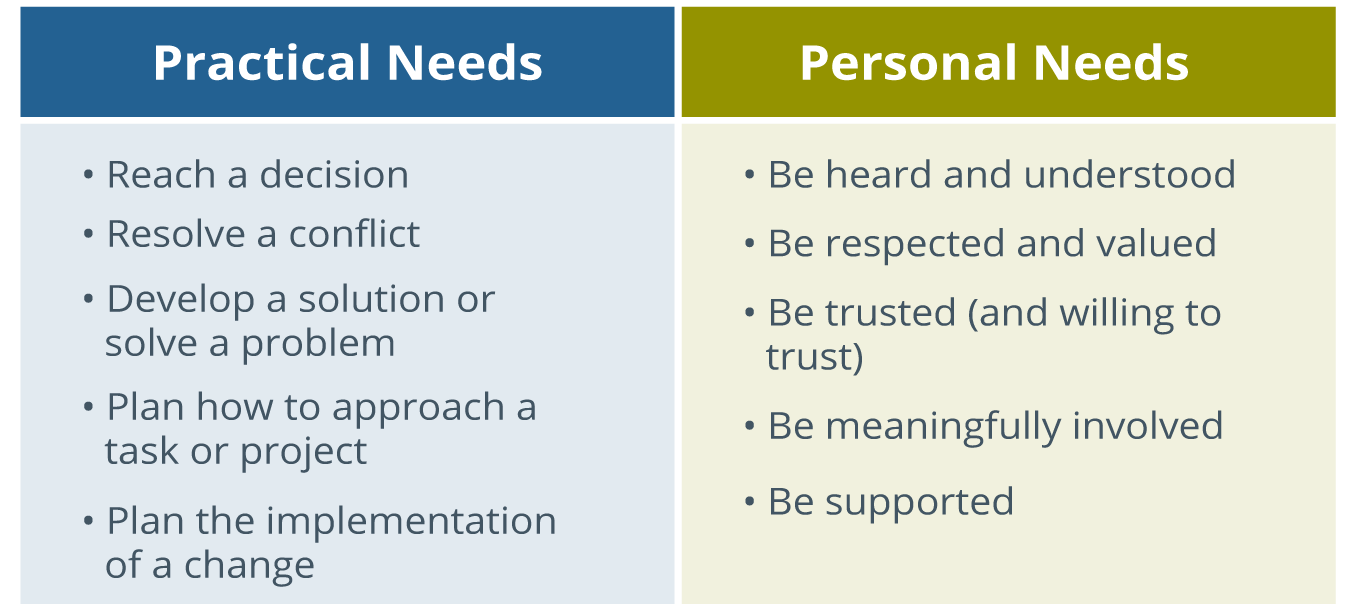In a competitive talent market, it can be easy to write off turnover as inevitable. When we lose high-performing talent, we can simply point to market forces outside of our control. Yet, it’s crucial to adopt a mindset of focusing on what leaders can control to retain talent. To that end, let’s explore the top ten reasons why employees stay at companies and what leaders at all levels can do about it.
And we can’t talk about why employees stay without discussing so-called “quiet quitting.” While definitions vary, it’s clear that there’s more than one way to quit a job these days. Employees who feel uninspired, underappreciated, or overworked may begin to check out long before they give you their two weeks’ notice. Great leaders have a tremendous impact on retention. By looking at the leadership skills that drive retention, we can define the DNA of a leader who will outperform their peers in retaining their top talent, regardless of external forces in the labor market.
If employee turnover is a concern in your organization, think about how well your leaders perform in each of the following categories—and how, as HR professionals, we can develop leaders to close gaps in their skills that contribute to turnover.
Employee Reason #1: Feeling Valued and Respected
One of the top ten reasons why employees stay is because they feel valued and respected. This is the not-so-secret sauce: it’s far less tempting to look for greener pastures when your leader and colleagues treat you with dignity and respect.

Leaders play a huge role in creating this culture, so we must develop them to excel here. In DDI’s foundational leadership development programs, we teach leaders the Key Principles. These are the essential interpersonal skills that help them meet employees’ personal and practical needs and reinforce the dignity and esteem of everyone they interact with.
By consistently using these skills, leaders cultivate more engaged and productive teams—and reduce the chance that employees will look for opportunities elsewhere.
Employee Reason #2: Career Growth, Learning, and Development
For short-term retention, employees need training and career development to succeed in their role. This is particularly true of employees in at-risk roles, such as becoming a first-time leader. A modern approach to retention-enabling development will focus on making development a way of work—supporting leaders in all of their moments of need.
For longer-term retention, companies must also offer career mobility frameworks. They must provide employees with chances to make non-traditional lateral moves into new, more fulfilling career paths. This can be tricky. There are many barriers to internal career mobility. HR should establish career frameworks that chart a path for career mobility. And all leaders can engage employees in discussions about their long-term career paths, including discussing aspirations that would lead them away from their current functional role.
On a personal note: I’m a millennial who will be celebrating my eighteenth anniversary working at the same company. My employer’s willingness to support two major career transitions has been an essential ingredient to finding my dream job and retaining me over nearly two decades.
Employee Reason #3: Involvement in the Direction and Growth of the Company
A top reason why employees stay is when their ideas are seriously considered, and they can provide input on matters pertaining to them. It is immensely frustrating as a frontline employee to see opportunities for improvement, only to report them to leadership and see no response.
Above all, leaders who listen and act on behalf of their teams will win the war for talent. Command and control leaders will find themselves in the painful cycle of losing smart employees who feel disempowered.
To properly involve employees, leaders should regularly solicit employees’ ideas. When an idea can be acted upon, do so and make a point to acknowledge the employee who suggested it. Even when an idea can’t be implemented, it’s still important to make sure the employee feels heard. If appropriate, share the rationale for why this specific idea isn’t viable. And don’t forget to encourage the employee to bring up further ideas in the future.
More than just involving employees, leaders need to paint a compelling picture of the company and its vision. Especially in virtual or hybrid teams, it’s easy for employees to become disconnected from the organization’s vision and purpose. Employees stay when they feel like they are an important part of something they believe in.
Employee Reason #4: An Inclusive Culture
An inclusive culture has an outsized impact on retention—especially in spaces known to be less inclusive. For example, a 2021 survey found that half of tech employees had left or wanted to leave their job because of an unwelcoming culture. And 68% felt their negative experience was due to “their gender, ethnicity, socio-economic background, or neurodevelopmental condition.”

DDI has identified four key leader behaviors that drive a positive, inclusive culture:
- Coach inclusively by asking questions to understand the identities and experiences of people you coach, connecting through authentic listening and sharing, and energizing others by igniting their confidence.
- Lead inclusive meetings by identifying who needs to be involved in discussions, creating a psychologically safe environment, and cultivating equitable space for contributions so everyone can be heard.
- Resolve conflict fairly by listening to and validating perspectives from both sides of a conflict, knowing when to escalate to HR, and providing empathetic feedback to address ineffective or exclusive behaviors.
- Delegate equitably by distinguishing between high-value and low-value assignments, identifying team members for assignments in an unbiased way, and pairing delegation with support and mentorship.
Employee Reason #5: Fair Compensation and Benefits
In a competitive job market, fair compensation and benefits will always be a differentiator in what makes employees stay. Even in a positive, supportive culture, it’s hard to retain staff who know they’re being paid below market rates or whose benefits aren’t adequate.
It’s never been easier for employees to gauge whether they’re being paid fairly. Resources like Glassdoor and informal shared Google docs that report salaries create pay transparency. Plus, younger generations tend to speak more freely about their pay.
Long gone are the days when employees blindly accept their employer’s assertion that they are paid fairly.
Traditional employee benefits like affordable medical care and sufficient paid time off remain important. But employees consider other benefits in their decision to stay. This includes benefits such as paid parental leave, the option to work remotely, learning stipends, and allowances for home office equipment or use of co-working spaces.
Leaders at all levels should listen to employees’ concerns about their compensation and benefits and, as appropriate, raise them to HR and senior leadership to maximize retention.
Employee Reason #6: Excitement and Satisfaction in the Workplace
Many companies measure employee engagement as a metric of employees’ excitement and satisfaction. Yet, these approaches can fall short. In today’s fast-moving workplace, conducting large engagement surveys every 18 months may simply be too slow.
To adapt, some companies are moving to more agile ways of measuring engagement through shorter, more frequent pulse surveys. Others, like Microsoft, have shifted away from employee engagement to measuring employee thriving.

Regardless of your framework, it’s critical that leaders sincerely consider the feedback they receive from surveys and other inputs like 360s. And it’s not enough to make a game plan for improvement. Leaders should engage their teams in discussions of survey results and solicit their ideas for making a better workplace.
Employee Reason #7: Work-Life Balance
According to Gallup, employees of all generations rank “the organization cares about employees’ wellbeing” in the top three criteria they look for in an employer. And for millennials and Generation Z, it tops their list.
It’s easy to apply Band-Aid solutions—like wellness programs or resilience initiatives—but those will never be enough. The answer is your culture.
A culture of wellbeing is created by leaders. How does your company culture support physical, emotional, and social wellbeing? Here are some starter questions to ask:
- How often do leaders email or IM their teams outside of normal work hours, creating the expectation that they reply in the evenings and on weekends?
- Do leaders encourage employees’ full use of paid time off? Do they support employees in their absence?
- Do leaders have the skills to navigate discussions with employees about mental wellbeing? Or are discussions about mental health still shrouded in stigma?
Employee Reason #8: Integrity of Company Leadership
Another one of the top ten reasons why employees stay is when they feel that the leaders at their company behave according to a consistent code of ethical and moral principles. Trust in the integrity of individual leaders—to behave consistently and do what they say they’ll do—is essential for retention.
At a more macro level, employers are wise to acknowledge the importance of ESG factors (environmental, social, and governance) on employee retention. Employees increasingly value things like sustainability and ethical business practices. It’s hard to stay at a company that behaves in a manner inconsistent with an employee’s personal code of ethics.
With social and political issues blending more into the workplace, one important—and precarious—way that leaders establish their integrity is in how they take a position on issues of ethical consideration, even and especially when those positions do not come without controversy.
Employee Reason #9: Providing a Strong Sense of Purpose
According to research by McKinsey, there is an interesting gap in work’s ability to fulfill a sense of purpose. Seventy percent of employees surveyed said that their sense of purpose is largely defined by work. Yet, in contrast, only 15% of frontline managers and employees felt that they were living their purpose at work.
So how can leaders help close this gap? It can be easy for team meetings and one-on-ones to be dominated by issues of the day and the tactics of execution. Leaders miss vital opportunities to help employees reflect on the purpose of their work. How does what they do specifically impact the organization overall? Does it have an impact on their community or, more broadly, society? And most to the point: how does their work impact outcomes that are personally meaningful to the individual?
To address these questions, leaders must understand what underlies each employee’s sense of purpose and also be vigilant about making connections between what they do and what matters most to them.
Employee Reason #10: Working with Talented Peers
Employees stay in work environments where they are surrounded by high-performing, talented colleagues. This is a key ingredient for a positive work culture. One of the best ways to help employees constantly grow is to surround them with team members who they can learn from and share best practices.
In addition, it hurts morale when an employee feels like they are on a low-performing team that requires them to do more than their fair share. To maximize retention, leaders must set meaningful performance standards and hold team members accountable to meeting or exceeding them.
How Leaders Can Create an Environment that Supports Employee Retention
While retaining employees can feel understandably daunting for leaders, these top ten reasons why employees stay should give some insight into what they can do to create an environment that supports retention.
Additionally, one key way that leaders can keep a pulse on how employees feel about their roles and work is to have regular retention conversations. There are a few simple questions leaders can ask that can provide incredible insights to help them retain their team. Learn more about how leaders can confidently initiate retention discussions, including example questions to ask.
Mark Smedley is a Leadership Advisor for DDI. He is passionate about helping organizations hire the best leaders, build their leadership bench strength, and make leadership development a way of work in a fast-paced world.
Topics covered in this blog

